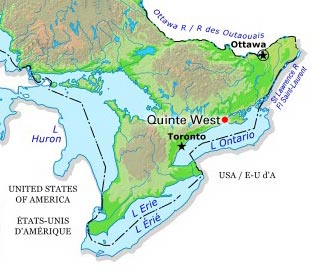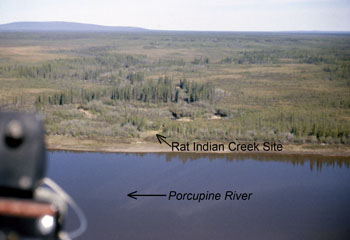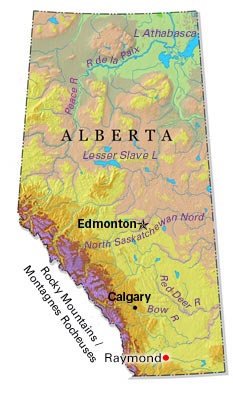Browse "Places"
-
Article
Quesnel
Quesnel, BC, incorporated as a city in 1928, population 10 007 (2011c), 9326 (2006c). The City of Quesnel is located at the junction of the Quesnel and Fraser rivers in central British Columbia, 625 km northeast of Vancouver.
"https://development.thecanadianencyclopedia.ca/images/tce_placeholder.jpg?v=e9dca980c9bdb3aa11e832e7ea94f5d9" // resources/views/front/categories/view.blade.php
https://development.thecanadianencyclopedia.ca/images/tce_placeholder.jpg?v=e9dca980c9bdb3aa11e832e7ea94f5d9
-
Article
Quidi Vidi Battery
The Quidi Vidi Battery was built in 1762 by the French. The French attacked the ST JOHN'S, Nfld, area in one of the last campaigns of the SEVEN YEARS' WAR, capturing and burning many settlements around Trinity and Conception bays. They then erected the battery to defend their newly won territory.
"https://development.thecanadianencyclopedia.ca/images/tce_placeholder.jpg?v=e9dca980c9bdb3aa11e832e7ea94f5d9" // resources/views/front/categories/view.blade.php
https://development.thecanadianencyclopedia.ca/images/tce_placeholder.jpg?v=e9dca980c9bdb3aa11e832e7ea94f5d9
-
Article
Quill Lakes
The Quill Lakes are three connected saline lakes in southeastern Saskatchewan. They are located 150 km north of Regina and 152 km east of Saskatoon. From west to east the lakes are named Big Quill, Middle Quill (also known as Mud Lake) and Little Quill. Despite its name, at 181 km2 Little Quill is the second largest of the three lakes. Big Quill is the largest at 307 km2. The Quill Lakes’ elevation is 516 m.
"https://development.thecanadianencyclopedia.ca/images/tce_placeholder.jpg?v=e9dca980c9bdb3aa11e832e7ea94f5d9" // resources/views/front/categories/view.blade.php
https://development.thecanadianencyclopedia.ca/images/tce_placeholder.jpg?v=e9dca980c9bdb3aa11e832e7ea94f5d9
-
Article
Quinte West
Long occupied by Indigenous peoples, at the time of first European contact, the Mississauga (Ojibwa) occupied the region.
"https://d2ttikhf7xbzbs.cloudfront.net/media/media/ee432d3b-83bf-4fa4-acd0-c86635530374.jpg" // resources/views/front/categories/view.blade.php
https://d2ttikhf7xbzbs.cloudfront.net/media/media/ee432d3b-83bf-4fa4-acd0-c86635530374.jpg
-
Article
Quispamsis
Quispamsis, NB, incorporated as a town in 1998, population 17 886 (2011c), 15 239 (2006c). The Town of Quispamsis is located 22 km northeast of SAINT JOHN along the Kennebecasis River.
"https://development.thecanadianencyclopedia.ca/images/tce_placeholder.jpg?v=e9dca980c9bdb3aa11e832e7ea94f5d9" // resources/views/front/categories/view.blade.php
https://development.thecanadianencyclopedia.ca/images/tce_placeholder.jpg?v=e9dca980c9bdb3aa11e832e7ea94f5d9
-
Article
Quttinirpaaq National Park
Quttinirpaaq National Park (established 1988, 37 775 km2) is Canada's second-largest national park (after Wood Buffalo National Park).
"https://d2ttikhf7xbzbs.cloudfront.net/media/media/5176d9ce-bf5f-4fdf-9453-c0f71b3128e6.jpg" // resources/views/front/categories/view.blade.php
https://d2ttikhf7xbzbs.cloudfront.net/media/media/5176d9ce-bf5f-4fdf-9453-c0f71b3128e6.jpg
-
Article
Railway Station
More familiar are the "road stations" built between 1855 and 1857 for the Grand Trunk Railway's line from Montréal to Toronto and Sarnia.
"https://d2ttikhf7xbzbs.cloudfront.net/media/media/10107a9f-701b-469d-83d4-c13b79c50b3e.jpg" // resources/views/front/categories/view.blade.php
https://d2ttikhf7xbzbs.cloudfront.net/media/media/10107a9f-701b-469d-83d4-c13b79c50b3e.jpg
-
Article
Railways, Track and Yards
Railways, Track and Yards Railway track is the assembly of the 5 basic components - rail, ties, fastenings, ballasts and subgrade - over which trains run. Rails are rolled steel lengths bolted or welded together to form the running surface for trains.
"https://development.thecanadianencyclopedia.ca/images/tce_placeholder.jpg?v=e9dca980c9bdb3aa11e832e7ea94f5d9" // resources/views/front/categories/view.blade.php
https://development.thecanadianencyclopedia.ca/images/tce_placeholder.jpg?v=e9dca980c9bdb3aa11e832e7ea94f5d9
-
Article
Rainbow Stage
Rainbow Stage, named for its rainbow-shaped proscenium arch, opened with a variety show directed by Duncan on 7 July 1954. In September 1955 Duncan directed the first musical comedy performed there, Brigadoon, which marked the beginning of a tradition.
"https://d2ttikhf7xbzbs.cloudfront.net/media/media/9654eb74-30b7-4494-8deb-089276f161cf.jpg" // resources/views/front/categories/view.blade.php
https://d2ttikhf7xbzbs.cloudfront.net/media/media/9654eb74-30b7-4494-8deb-089276f161cf.jpg
-
Article
Rainbow Stage
After several seasons of poor weather a triodetic dome was constructed over the theatre in 1970.
"https://d2ttikhf7xbzbs.cloudfront.net/media/media/9654eb74-30b7-4494-8deb-089276f161cf.jpg" // resources/views/front/categories/view.blade.php
https://d2ttikhf7xbzbs.cloudfront.net/media/media/9654eb74-30b7-4494-8deb-089276f161cf.jpg
-
Article
Rainy Lake
Rainy Lake, 932 km2 (741 km2 in Canada), elev 338 m, is located in rough woodlands astride the Ont-Minn border, 240 km W of Lk Superior. It discharges into the Rainy R, which flows W along the border to LK OF THE WOODS.
"https://development.thecanadianencyclopedia.ca/images/tce_placeholder.jpg?v=e9dca980c9bdb3aa11e832e7ea94f5d9" // resources/views/front/categories/view.blade.php
https://development.thecanadianencyclopedia.ca/images/tce_placeholder.jpg?v=e9dca980c9bdb3aa11e832e7ea94f5d9
-
Article
Rainy River Burial Mounds
The Rainy River Burial Mounds archaeological sites are located on the Canadian bank of the Rainy River in Ontario.
"https://development.thecanadianencyclopedia.ca/images/tce_placeholder.jpg?v=e9dca980c9bdb3aa11e832e7ea94f5d9" // resources/views/front/categories/view.blade.php
https://development.thecanadianencyclopedia.ca/images/tce_placeholder.jpg?v=e9dca980c9bdb3aa11e832e7ea94f5d9
-
Article
Random Island
Random Island, NL, 249 km2 is the second largest island off the Island of Newfoundland (FOGO ISLAND is larger at 254 km2). Random Island runs 40 km east-west and 14 km north-south, and is situated in a deep western indentation of TRINITY BAY.
"https://development.thecanadianencyclopedia.ca/images/tce_placeholder.jpg?v=e9dca980c9bdb3aa11e832e7ea94f5d9" // resources/views/front/categories/view.blade.php
https://development.thecanadianencyclopedia.ca/images/tce_placeholder.jpg?v=e9dca980c9bdb3aa11e832e7ea94f5d9
-
Article
Rat Indian Creek Archaeological Site
The Rat Indian Creek site is located above the Arctic Circle, on the Porcupine River, 60 km east of the Vuntut Gwitchin village of Old Crow, Yukon.
"https://d2ttikhf7xbzbs.cloudfront.net/media/media/891e3d37-3191-4b19-900a-76e3eb2be918.jpg" // resources/views/front/categories/view.blade.php
https://d2ttikhf7xbzbs.cloudfront.net/media/media/891e3d37-3191-4b19-900a-76e3eb2be918.jpg
-
Article
Raymond
Raymond, Alberta, incorporated as a town in 1903, population 3,708 (2016 census), 3,743 (2011 census). The town of Raymond is located in southern Alberta, approximately 35 km south of Lethbridge. In the early 1900s the area was settled by Mormons and Japanese labourers (see also Japanese Canadians). The Raymond Stampede, Canada’s first rodeo, has been held in the town since 1902.
"https://d2ttikhf7xbzbs.cloudfront.net/media/media/073c1dc8-391d-4239-808d-814a185846c0.jpg" // resources/views/front/categories/view.blade.php
https://d2ttikhf7xbzbs.cloudfront.net/media/media/073c1dc8-391d-4239-808d-814a185846c0.jpg
